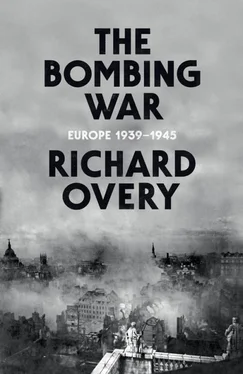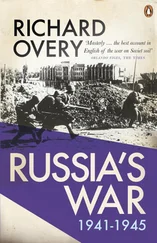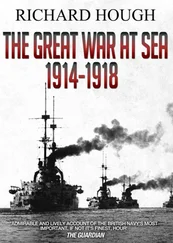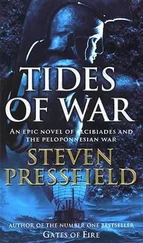1 ...5 6 7 9 10 11 ...254 The story of the civilian front line in the air war is an aggregate story of loss of extraordinary proportions: an estimated 600,000 killed, as many seriously injured, millions more less severely hurt; millions dispossessed through bomb destruction; 50–60 per cent of the urban area of Germany obliterated; countless cultural monuments and works of art irreparably lost. It is only when these costs are summarized that the unique character of the bombing war can be properly understood. The dead were not accidental bystanders but the consequence of a technology generally incapable of distinguishing and hitting a small individual target, and which all sides knew was incapable of doing so with the prevailing science. This raises a number of questions about why the states involved never reined back campaigns with such a high civilian cost and in particular why Britain and the United States, liberal democracies which self-consciously occupied the moral high ground during the war, and had both deplored bombing before 1939, ended up organizing strategic bombing campaigns that killed around 1 million people in Europe and Asia. These seem obvious questions seventy years later but they can only be properly answered by understanding the terms in which the moral imperatives of war were perceived at the time. The assault on civilians signified an acceptance, even by the victim populations, of shifting norms about the conduct of war; what had seemed unacceptable legally or morally in 1939 was rapidly transformed by the relative ethics of survival or defeat. 42
It is easy to deplore the losses and to condemn the strategy as immoral, even illegal – and a host of recent accounts of the bombing have done just that – but current ethical concerns get no nearer to an understanding of how these things were possible, even applauded, and why so few voices were raised during the war against the notion that the home front could legitimately be a target of attack. 43The contemporary ethical view of bombing was far from straightforward, often paradoxical. It is striking, for example, that among those who were bombed there was seldom clear or persistent hatred for the enemy; there was a sense that ‘war’ itself was responsible and ‘modern war’ in particular, as if it enjoyed some kind of existence independent of the particular air fleets inflicting the damage. There could even be a sense that bombing was necessary to purge the world of the forces that had unleashed the barbarism in the first place, a blessing as much as a curse. A young German soldier captured and interrogated in Italy early in 1945 told his captors: ‘In the long run your bombings may be good for Germany. They have given her a taste, bitter though it may be, of what war is really like.’ 44The moral response to bombing and being bombed was historically complex and sometimes surprising. Issues that seemed black and white before the war and do so again today were coloured in many shades of grey during the conflict. Nonetheless, the figures on death, injury and destruction are shocking, just as the other forms of mass death of civilians in the Second World War. The grisly consequences of the bombing war would have outraged opinion in the 1930s just as they have attracted current opprobrium among historians and international lawyers. 45Exploring how it was possible to legitimize this scale of damage in the brief span of total war between 1940 and 1945 forms the fourth and perhaps the most important element in The Bombing War , alongside the political context that shaped the development of the aerial conflict, the military operations that defined its precise character and extent, and the administrative, social and cultural responses that determined the limits of what bombing could actually achieve.
Part One
GERMANY’S BOMBING WAR
1
Bombing before 1940: Imagined and Real
In 1938 the American critic Lewis Mumford, well known for his unflattering views on the modern giant city, explored the rise and fall of what he called ‘Megalopolis’ in his book The Culture of Cities . He described ‘a vast pus-bag of vulgar pretense and power’ in which civilization became year by year more fragile and insecure until the day when the air-raid sirens sound: ‘Plainly, terrors more devastating and demoralizing than any known in the ancient jungle or cave have been re-introduced into modern urban existence. Panting, choking, spluttering, cringing, hating, the dweller in Megalopolis dies, by anticipation, a thousand deaths.’ A humane civic life, Mumford argued, was no longer possible in modern cities during a bombing war. The end result of the destruction was a city of the dead, ‘Nekropolis’, ‘a tomb for the dying… flesh turned to ashes’. 1
Mumford was one of hundreds of Europeans and Americans whose powerful imaginative writing helped to define the popular idea of what a bombing war would be like long before it became a possibility or a reality. The most famous of them all was the English novelist H. G. Wells whose The War in the Air , published as far back as 1908, set the pattern for all subsequent literature, fiction and non-fiction, that addressed the possible effects of a bombing war. In the novel, a fleet of malevolent German airships destroys New York in a matter of hours, ‘a crimson furnace from which there was no escape’. The worldwide war that develops engulfs civilization, whose misplaced sense of security and progress is blotted out more rapidly than the fall of any earlier civilized order: ‘And this was no slow decadence that came to the Europeanized world; those other civilizations rotted and crumbled down, the Europeanized civilization was, as it were, blown up.’ 2Wells used the book to highlight a theme that he returned to regularly in the years leading up to the outbreak of the Second World War: that the application of modern science to war was fraught with danger. The destruction of New York in the novel was, he suggested, ‘the logical outcome’ of this unfortunate marriage. In a less well-known sequel, The World Set Free , written five years later in 1913, Wells anticipated the nuclear age, in which 200 of the world’s great cities are destroyed in the ‘unquenchable crimson conflagrations of the atomic bomb’. 3Like Mumford, Wells saw urban life as both defining the modern age (‘gigantic cities spreading gigantically’) and uniquely susceptible to obliteration by the very science to which it had given birth. 4
Neither the alleged fragility of the modern city nor the fears for the end of civilization were realized in the war that broke out in August 1914, yet they remained dominant tropes in the thirty years that separated Wells’ early predictions from the reality of mass city bombing after 1940. Aircraft in the Great War were in their technical infancy. Although the war did witness the origins of what came to be called by its end ‘strategic bombing’, the scale of such bombing was tiny and its direct impact on the warring states subjected to it was negligible. The first major raids were mounted by dirigibles, as they were in Wells’s novel. The German Navy approved long-range attacks by Zeppelin airships against British port cities and, eventually, against targets in London. The first of 52 raids was made on the night of 20–21 January 1915. Altogether during the war airships dropped 162 tons of bombs, mostly haphazardly, and killed 557 people. 5Attacks by aeroplanes away from the front line began on 22 September 1914 when a handful of aircraft from the Royal Naval Air Service, on the orders of the First Lord of the Admiralty, Winston Churchill, attacked Zeppelin sheds in Cologne and Düsseldorf, followed on 23 November by a raid on the city of Friedrichshafen, where Zeppelins were built. The first German aircraft to bomb Britain did so in retaliation on 24 December. There were small raids by German, French and British units for the next two years but they achieved almost nothing until the German Air Force formed an ‘England Squadron’ in late 1916, commanded by Captain Ernst Brandenburg, to begin a series of day and night attacks against British ports, including 18 raids on London. The first raid was made on Folkestone on 25 May 1917, the last a year later, on the night of 19–20 May against London. The mixed force of Gotha-IV and R-Gigant multi-engine bombers dropped 110 tons in 52 raids, killing 836 and wounding 1,982. The original object had been to destroy ‘the morale of the British people’ to such an extent that the British government might consider withdrawing from the conflict. But the weight of attack failed entirely to support what was at best a speculative strategy. Small German raids were also made on French industrial targets in Paris, killing 267 Parisians, but achieving little. The offensive petered out in spring 1918 following mounting losses. 6Its principal achievement was to provoke the British into retaliation.
Читать дальше
Конец ознакомительного отрывка
Купить книгу












